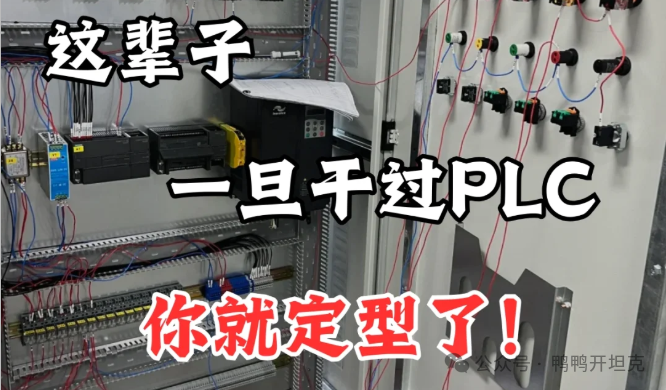
PLC Performance Optimization: Task Cycle Optimization for 30% Faster Real-Time Response!
Introduction
**Hey, automation engineers!** Today, I want to share a secret that can make your PLC “fly” — task cycle optimization. Don’t be intimidated by this technical term, I will explain it in the most relatable way. **Imagine what it would mean if your PLC program’s speed increased by 30%?** It’s like magically equipping an old bicycle with an electric motor! Want to know how to achieve this? Let’s explore together!
What is Task Cycle Optimization?
Let’s use a vivid analogy. Think of the PLC as a busy restaurant waiter, and the task cycle is the frequency at which the waiter checks on the tables.Fixed cycles are like a waiter mechanically checking all tables every 5 minutes, regardless of whether some tables need no service while others urgently require help.
Task cycle optimization is about making the waiter smarter:
-
VIP tables (critical tasks): Check every minute
-
Regular tables (routine tasks): Check every 5 minutes
-
Empty tables (non-critical tasks): Check every 30 minutes
In the PLC context, this means we can dynamically adjust the execution frequency of tasks based on their importance, rather than executing all tasks at the same cycle.
Why Optimize Task Cycles?
“My PLC has always used fixed cycles and runs just fine, why change?” I hear someone asking. Let me answer you with three vivid scenarios:
-
The Truth About Resource Waste: It’s as absurd as having a CEO spend half an hour checking the cleanliness of the restrooms every day! 80% of PLC resources are wasted on unnecessary frequent executions.
-
Breakthrough in Real-Time Performance: Critical tasks (like emergency stop detection) require millisecond-level response, but are dragged down by routine tasks (like room temperature monitoring). After optimization, the response speed of critical tasks can improve by up to 30%!
-
Revitalizing Old Equipment: For older PLCs with limited memory, optimizing the cycle is like getting a free CPU performance upgrade!
Three Practical Tips for Task Cycle Optimization
1. Layer Task Priorities
<span>#color(red)[Important]</span> Divide your PLC tasks into three levels:
-
Red Alert Level (1ms cycle): Safety interlocks, emergency stop signals
-
Yellow Routine Level (10-100ms cycle): PID control, critical sensors
-
Green Background Level (1s or more cycle): Data logging, non-critical communications
2. Event-Triggered Instead of Cycle Scanning
<span>#color(blue)[Tip]</span> Instead of having the PLC constantly check a certain state, teach it to “act only when there is a change“:
// Traditional Method
IF "Conveyor Running" THEN
// Execute every cycle
END_IF
// Optimized Method
IF "Conveyor Running" (rising edge) THEN
// Execute only on state change
END_IF
3. Dynamic Cycle Adjustment
Some tasks can intelligently adjust their execution frequency based on operating conditions:
-
When the production line is running at full speed: Quality inspection cycle = 50ms
-
During low-speed debugging: Quality inspection cycle = 500ms
-
When stopped: Quality inspection cycle = 5s
Real Case: Packaging Line Speed Improvement
A food packaging factory encountered a bottleneck: After increasing the line speed, the PLC often missed critical signals. We performed task cycle optimization:
-
Original State: All tasks unified at a 50ms cycle
-
After Optimization:
-
Photoelectric sensor detection: 10ms
-
Robot control: 20ms
-
Production statistics: 1s
-
Device status display: 2s
The results were exciting:
✅ Response time for critical signals dropped from 45ms to 32ms
✅ CPU load decreased from 90% to 65%
✅ Production line speed successfully increased by 15%
The boss asked with a smile: “Did you change to a new PLC?” We replied: “No, we just taught it to work smarter!”
Pitfall Guide
Optimization is great, but be aware of these traps:
-
Priority Deadlock: Too many high-priority tasks can slow down the system. It is recommended that critical tasks do not exceed 20% of total tasks.
-
Overly Aggressive Cycle Settings: Setting the cycle too short is like having the waiter check every second, which actually reduces overall efficiency.
-
Forgetting to Look at the Big Picture: When optimizing a single task, monitor the overall CPU usage.
Your Optimization Action Plan
Are you ready? Start your optimization journey with this four-step method:
-
Baseline Survey: Use PLC diagnostic tools to record the current task cycles and CPU load
-
Develop a Plan: According to the 80/20 rule, first optimize the 20% of tasks that consume the most resources
-
Small-Scale Testing: Choose non-critical devices for initial trials
-
Full Promotion: Record the optimization effects and showcase your “free performance upgrade” to management
Interactive Moment
-
In your PLC system, which task should be prioritized for optimization? Is it the one that always gets complaints about slow response?
-
What PLC built-in performance analysis tools have you used? Share your experiences!
-
If you had to make an analogy, what animal would the PLC before and after optimization be like? Is it a sloth turning into a cheetah?
Conclusion
Remember, the best optimization is not about making machines work harder, but about making work smarter! A 30% performance improvement could mean:
-
Reducing equipment downtime by 15%
-
Increasing production line speed by 20%
-
Extending the lifespan of an old PLC by 3 years
Now go check your task cycle settings! I look forward to seeing your optimization results in the comments. In the next issue, we will explore how to achieve another 10% performance improvement through memory optimization, stay tuned!
<span>#color(red)[Friendly Reminder]</span>: Be sure to back up your program before optimization! Safety first!
ShareSaveViewLike